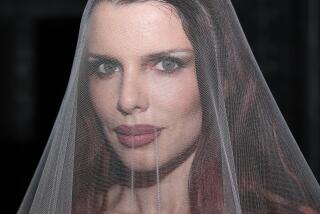Maurice Sendak dies at 83; author of ‘Where the Wild Things Are’
He had already been proclaimed “the Picasso of children’s books” by Time magazine when Maurice Sendak, then in his 30s, wrote and illustrated “Where the Wild Things Are,” a dark fantasy that became one of the 10 bestselling children’s books of all time.
Published in 1963, the book was a startling departure from the sweetness and innocence that then ruled children’s literature. “Wild Things” tapped into the fears of childhood and sent its main character — an unruly boy in a wolf costume — into a menacing forest to tame the wild beasts of his imagination.
Librarians banned the book as too frightening. Psychologists and many adults condemned it for being too grim. But a 1964 Los Angeles Times review echoed many critics: The “aggressive flight of fantasy” was “the best thing of its kind in many a year.”
Sendak, whose unsentimental approach to storytelling revolutionized children’s books, died Tuesday at a hospital in Danbury, Conn., four days after having a stroke, said his friend and caretaker, Lynn Caponera. He was 83.
“Somehow it doesn’t feel possible that Maurice Sendak is gone; he is as essential and eternal as Mother Goose,” Eva Mitnick, manager of youth services at the Los Angeles Public Library, told The Times on Tuesday. “His books are story-time favorites and a crucial part of the children’s literature canon.”
In 1971, Sendak was hailed as “the Norman Mailer of children’s books” by Digby Diehl, then The Times’ book critic.
Sendak had attained the same preeminence in storytelling for children that Mailer had in adult literature, Diehl wrote, and made “the same incredibly instinct-trusting leaps of imagination, risks of fantasy and marvelous journeys of delightful mental meandering ... only Sendak does it for kids.”
“Wild Things” was awarded the Caldecott Medal in 1964 for the most distinguished American picture book for children, and the author began receiving mail from young fans captivated by the grinning monsters Sendak said he modeled after the obnoxious relatives who populated the Sundays of his youth.
One boy wrote to ask: “How much does it cost to get to where the wild things are? If it is not expensive, my sister and I would like to spend the summer there.”
When President Obama read from “Wild Things” to children at the White House Easter egg roll in 2009, he called it one of his favorite books.
Sendak bristled at the notion that he was an author of children’s books and told People magazine in 2003 that he wrote stories “about human emotion and life.”
“They’re pigeonholed as children’s books, but the best ones aren’t — they’re just books,” he said.
Upon awarding Sendak the National Medal of Arts in 1997, President Clinton remarked, “Perhaps no one has done as much to show the power of the written word on children, not to mention on their parents, as Maurice Sendak.”
An illustrator of about 80 books and author-illustrator of 20 more, Sendak had won almost every important prize in children’s literature.
In 2002, the New York Times pointed out that Sendak had dominated its 50-year-old annual list of the year’s best illustrated children’s books “and the public consciousness of children’s books in the second half of the 20th century.”
Years before “Sesame Street” popularized playful teaching of the young, Sendak unleashed his frolicsome humor in 1962’s “The Nutshell Library.” The four tiny volumes include lessons on ABCs, counting and a morality tale told through Pierre, the boy who does not care even when a lion fancies him for dinner.
Of the books he wrote, Sendak said “Higglety Pigglety Pop! Or There Must Be More to Life” (1967) was his favorite. The nonsense tale starred a terrier who decides there must be more to life than having everything. The dog was based on Jennie, his Sealyham terrier and companion of 14 years, who had gone “to Castle Yonder,” as he wrote in the book.
Sendak considered “Wild Things” part of a loose trilogy of books that included the award-winning “In the Night Kitchen” (1970), about the nocturnal adventures of Mickey, who barely escapes being baked into a cake, and “Outside Over There” (1981), the tale of a baby kidnapped by goblins.
“Night Kitchen” was also about his “victory over death,” he later said. In 1967, he not only lost his beloved dog, his mother died of cancer and he had a heart attack during an interview on British TV. Two years later his father died.
Again, Sendak stirred controversy because “Night Kitchen’s” comic-style illustrations showed the child-hero Mickey falling through the air naked. Some librarians drew diapers on Mickey to cover the nudity.
“Night Kitchen’s” illustrations were a “farewell to New York,” Sendak said, as he relocated to Connecticut in search of a quieter life.
He viewed the trilogy as “variations on the same theme: how children master various feelings — anger, boredom, fear, frustration, jealousy — and manage to come to grips with the realities of their lives,” the author said in “The Art of Maurice Sendak” (1980).
Much of his work was influenced by his nightmarish recollections of a childhood that he once recalled as “D-A-R-K.”
Maurice Bernard Sendak was born June 10, 1928, in Brooklyn and grew up there. He was the youngest of three children of Philip and Sadie Sendak, Polish Jews who emigrated to the U.S. just before World War I.
A sickly child, Sendak spent a great deal of time drawing, and his dressmaker father often told him elaborate bedtime stories.
His father lost most of the family fortune in the stock market crash of 1929, and many of his relatives died in the Holocaust.
“My childhood was completely misshapen by what was going on in the world,” Sendak, a guilt-plagued worrier, said on National Public Radio in 2005.
At 9, he started writing stories with his brother, Jack. His sister, Natalie, took Sendak to see his first Walt Disney film, which led to a lifelong fascination with Mickey Mouse.
In high school, he was an indifferent student who worked on backgrounds for comic strips such as Mutt and Jeff. He had a comic in the school newspaper and illustrated a physics textbook for a teacher.
After graduating in 1946, Sendak worked for a window-display company. Two years later, he built mechanical wooden toys that his brother, an engineer, designed. Impressed by his creativity, FAO Schwarz executives hired Sendak as a window dresser.
His work caught the eye of noted children’s book editor Ursula Nordstrom, who hired him to illustrate the 1951 Marcel Ayme book “The Wonderful Farm” and became his mentor.
Nordstrom arranged for him to illustrate “A Hole Is to Dig,” a whimsical 1952 book of childhood definitions by Ruth Krauss that established Sendak as an illustrator.
To make a living, he illustrated about 20 books in a few years and learned to draw in a variety of styles. He admitted that he owed an artistic debt to classic Victorian book illustrators but said that most of his original work was influenced by his Brooklyn childhood.
“Night Kitchen” and “Wild Things,” Sendak wrote in 1971, “reflect a popular American art both crass and oddly surrealistic, an art that encompasses the Empire State Building, syncopated Disney cartoons and aluminum-clad comic-book heroes, an Art Moderne whose richness of detail was ... cataloged in the movies.”
As a teenager gazing out his apartment window, he saw a brash 9-year-old girl named Rosie, who orchestrated elaborate dramas with her friends. His drawings of her became the framework for his 1960 book “The Sign on Rosie’s Door.”
Working with singer-songwriter Carole King, Sendak pulled from “The Nutshell Library” and turned Rosie’s story into the animated television special “Really Rosie” in 1975.
It was developed into an off-Broadway play in 1980 and became a staple of the Night Kitchen Theatre, a national children’s theater group that Sendak helped start in 1990.
An opera fanatic, Sendak was dumbfounded when innovative opera director Frank Corsaro — long a fan of “Wild Things” — asked him to design costumes for a 1980 Houston Grand Opera production of Mozart’s “The Magic Flute.”
Critics called Sendak’s resulting set designs “sumptuous” with intriguing undertones of foreboding.
Over the next decade, he designed sets for about 10 operas, including writing lyrics and designing costumes for his own “Where the Wild Things Are,” a 45-minute opera that premiered in Belgium in 1980.
He worked on the sets for the stage and 1986 film version of “The Nutcracker” and designed for “Idomeneo,” a Mozart opera staged in 1990 at the Los Angeles Music Center. When playwright Tony Kushner adapted the children’s opera “Brundibar” into a picture book in 2003, Sendak drew the illustrations.
Sendak said he didn’t particularly want to make a “Wild Things” movie, but told Entertainment Weekly in 2003 “that’s all anybody wanted from me.”
When an imaginative film adaptation of “Wild Things,” directed by Spike Jonze, was released in 2009, Sendak was pleased that it was not seen as a film for children.
“It’s not cute and cuddly! It’s a real movie,” Sendak told The Times.
For 50 years, he shared his life with Dr. Eugene Glynn, a psychoanalyst who died in 2007. Sendak had no immediate survivors.
A lifelong insomniac, he kept a strict regimen that included a lengthy dog walk. At his death, he had a German shepherd named Herman for Sendak’s favorite author, Melville.
Of his ability to easily relate to children even though he was not surrounded by them, he once said: “We’ve all passed the same places. Only I remember the geography, and most people forget it.”
More to Read
Sign up for our Book Club newsletter
Get the latest news, events and more from the Los Angeles Times Book Club, and help us get L.A. reading and talking.
You may occasionally receive promotional content from the Los Angeles Times.







